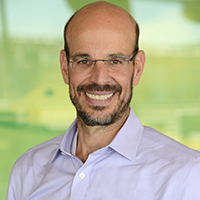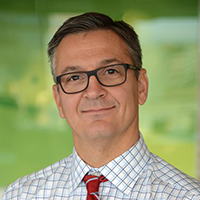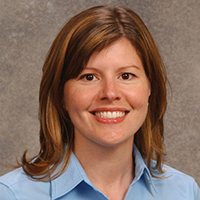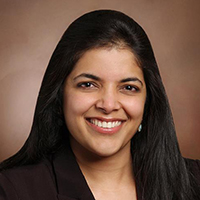One of the initially scheduled speakers at this spring’s “Transforming Healthcare” series on May 2 bowed out for a more spontaneous event: his own wedding. With his high-school diploma newly in hand and his little-known CAR T-cell therapy giving him time, the young man decided to embrace the future – now.
The teenager was among six pediatric patients in a first-in-human clinical trial on campus who had run out of treatment options for halting their blood cancers. For all the young participants, the therapy that has cancer care on the precipice of change did what repeated standard therapies could not do: put them in remission.
“He is 12 months post-infusion and doing great,” said Amy Keating, MD, a University of Colorado School of Medicine associate professor of pediatrics at the CU Anschutz Medical Campus, who joined three of her colleagues and fellow CU Cancer Center members for the “Transforming Healthcare: Unlocking the Potential of Cellular Therapy” event.
Launched seven years ago, the chancellor-sponsored series highlights ground-breaking work on campus while honoring the donors who make it possible.
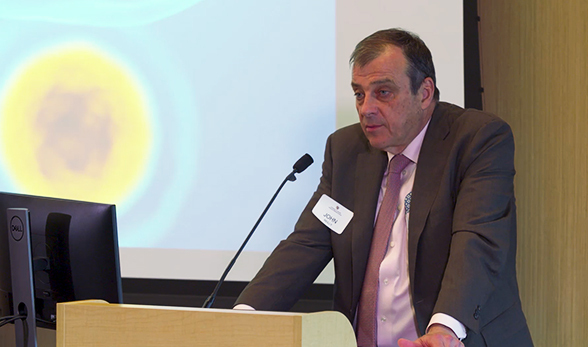
In his introductory remarks, Dean John Reilly Jr., MD, said he was jealous of today’s medical students "because the next decade of medicine is going to be tremendously exciting. These therapies are really a game-changer.” |
Cancer is the No. 1 disease killer in children. “It’s a reality that we deal with every day,” said Keating, the medical director of the Blood and Marrow Transplant and Cellular Therapy clinical program at Children’s Hospital Colorado. The years of life lost for these kids is “unacceptable” and why she and her colleagues “do what we do,” Keating told the audience of about 200 people.
How it started
Engineering a patient’s own T cells to fight their cancer was a concept scribbled on a piece of paper around 1987 and viewed by many scientists as a “crazy idea,” said Terry Fry, MD, a pediatrician and pioneer in CAR T therapy. Fry, recruited by CU Anschutz from the National Cancer Institute (NCI) in 2018, now serves as executive director of the Gates Institute on campus.
“But it works,” said Fry, who was with the NCI in 2010, when doctors there witnessed the first true success with CAR T therapy – a single infusion in a patient with advanced follicular lymphoma that completely cleared the cancer.
Numerous clinical trials around the country continued showing success. About 80% of children whose leukemia had withstood repeated chemotherapy treatments and bone-marrow transplants, leaving them with likely only months to live, were achieving full remission. The first CAR T drug was approved for pediatric acute lymphoblastic leukemia (ALL) in 2017.
Today, six drugs have been approved for five cancer types, and CU Anschutz – powered for over a decade by the Charles C. Gates family and the Gates Frontiers Fund – plays a strong role in advancing cellular and gene therapy, or regenerative medicine.
How it works
T cells are the body’s army of white blood cells whose mission involves seeking out bad cells, whether they’ve gone rogue from cancer or common viruses, and destroying them, Fry said. While extremely powerful when they can identify invaders, T cells fail at recognizing some types of cancers.
With CAR T therapy, T cells are extracted from patients and engineered by infecting them in the lab with a weakened virus containing the chimeric antigen receptor (CAR). The cells are multiplied in the lab before being infused back into the patient, where they can better recognize and attach to the target cancer cells.
It might sound simple, but it’s not, said Michael Verneris, MD, a pediatrics professor and director of Bone Marrow Transplantation and Cellular Therapy at Children’s Hospital Colorado. Many roadblocks remain to making the promising new class of drug ready for widespread use, which the Gates Institute will help CU Anschutz overcome, Verneris said.
Potential side effects
As always, the No. 1 concern is patient safety, Verneris said. “This is a living drug,” he said, explaining that, within two to three days of infusion, CAR T cells begin expanding up to 10,000-fold in these patients because of their high disease burden. “Sometimes patients can get really sick,” he said, noting that half of all pediatric patients in early trials ended up in intensive care.
“It can be very dangerous,” Keating said, adding doctors have learned how to better manage and monitor for side effects, particularly cytokine release syndrome (CRS) and neurotoxicity.
About 15% of patients still develop severe grades of CRS, when the massive immune response results in critically high fevers and low oxygen and blood pressure. Neurotoxicity can also occur, with symptoms ranging from slight headaches to brain inflammation and comas, Keating said.
“Luckily, we have not experienced any deaths in our pediatric trials, but it’s something we always have to watch for as we increase doses.”
Perfect ecosystem
The unique qualities of the CU Anschutz campus fuel the research organization’s success, led for years by Dennis Roop, PhD, director of the Gates Center for Regenerative Medicine before it became the Gates Institute. Those assets include having two world-class hospitals – Children’s Hospital Colorado and UCHealth University of Colorado Hospital – as partners on campus, providing trial participants and expert patient care, Verneris said.
Keating added that having the Gates Biomanufacturing Facility (GBF) within walking distance of the hospitals and research labs has propelled CU Anschutz over one of the biggest hurdles with CAR T therapy: timing.
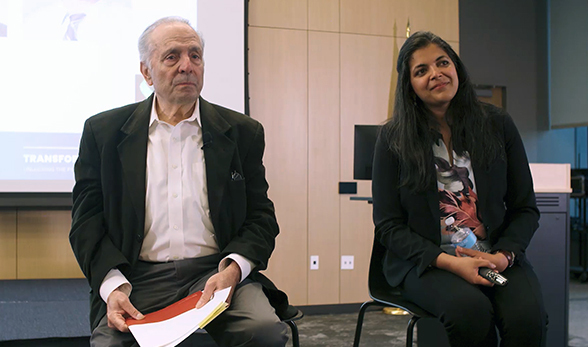
Larry Feierstein, whose lymphoma relapsed for a third time in 2020, shared his CAR T therapy experience along with his doctor of 12 years, Manali Kamdar, MD. |
In early-day trials, in addition to waiting upward of three months for insurance approval, researchers then had to send extracted T cells across the country for biomanufacturing, waiting six weeks for their return, Keating said.
“As you can imagine,” said Manali Kamdar, MD, clinical director of Lymphoma Services in the CU Division of Hematology, “cancer is not waiting on us.” Through hard work, the GBF on campus has now cut the wait time between extraction and infusion to 13 days for CU Anschutz patients.
Building on progress
Although all patients in both Keating and Kamdar’s trials so far experienced complete remission, data show that about half will relapse. In those cases, the CAR T cells either disappear, or the cancer cells outwit them by evolving.
With the Gates Institute behind them and the “genius” minds of her colleagues, CU Anschutz stands ready to meet the field’s unmet needs, Kamdar said. That includes developing a new therapy for these patients who relapse and discovering even more effective CAR T drugs with fewer side effects, Kamdar said.
“We are really looking at mechanisms and figuring out how to get smarter than the cancer,” Kamdar said, noting that existing CAR T products started with one protein on the lymphoma cell called CD19. “Can we trick the cancer cell and make a CAR that can target two proteins on the lymphoma cell?”
A trial on campus enrolling right now and led by Fry and Verneris will attempt to find out, using CD19 and CD22 proteins, she said.
Kamdar ended her presentation by introducing a longtime patient, Larry Feierstein, whose mantle cell lymphoma, diagnosed 15 years ago, relapsed for a third time just when COVID hit in 2020. Feierstein shared his experience with CAR T therapy with dry wit and humor; his close relationship with Kamdar was obvious in their banter.
The laughter died down when the jokes faded. “It’s been a long 15 years,” said a suddenly solemn Feierstein. “But without what I’ve been through here, and the people here, especially this young lady,” he said, gesturing toward Kamdar, “I don’t know where I’d be today,” Feierstein said, wiping away tears as the audience erupted in applause.
View the entire lecture and panel discussion below:
.jpg)
